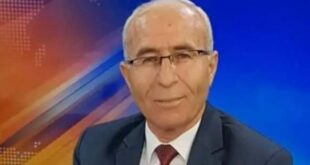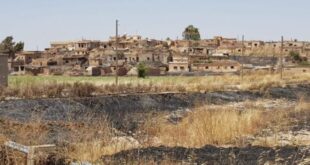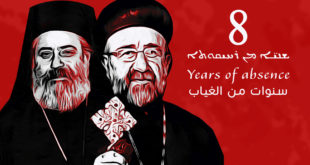ADO-World.org
24-April-2012
Syrian troops have killed dozens of civilians in the city of Hama, activists have said, as UN military observers toured protest centres near the capital Damascus, and both Brussels and Washington imposed new sanctions.
Government forces attacked the Arbeen neighbourhood of the western city and its surrounding areas on Monday with light and heavy machine guns, killing 28 civilians, said the British-based Syrian Observatory for Human Rights.
Video footage posted online by activists showed mortar rounds hitting the area, with plumes of smoke rising to the sky.
According to some reports, the area was shelled before ground troops entered.
"It began in the morning with tanks and artillery, there were houses burning," a local activist called Mousab told the Reuters news agency by telephone. "[Then] the military forces entered and shot people in the street."
Al Jazeera cannot independently verify accounts of violence due to restrictions imposed on international media.
The persistent bloodshed 11 days into a ceasefire sparked growing criticism from opposition activists of the fledgling UN mission, which still numbers just 11 observers out of a planned initial deployment of 30.
The UN-Arab League envoy Kofi Annan is due to brief the Security Council again on Tuesday.
The deal has curbed some of the violence, but the alleged killings in Hama’s Arbeen district on Monday have laid bare the difficulty of bringing to a complete halt 13 months of fighting that the UN says has left more than 9,000 people dead.
The Syrian government blames the violence on "armed terrorists" and said in February that more than 2,500 security forces personnel have been killed.
Ceasefire ‘incomplete’
Despite concerns over the mounting violence, Ban Ki-moon, the UN secretary-general, gave the approval for the deployment of 300 ceasefire monitors to Syria from next week.
Ban insisted on Monday that the government of Bashar al-Assad, the Syrian president, ensure the protection of the unarmed observers and allow them to travel freely throughout the country.
However, Lynn Pascoe, Ban’s political-affairs chief, told the Security Council that Assad’s compliance with a ceasefire plan "remains incomplete".
The UN observers visited several opposition strongholds near Damascus and were met by thousands of protesters demanding the collapse of the government.
Monitors also visited the town of Zabadani, where government forces and opposition fighters have clashed repeatedly in recent months.
Activists’ videos showed monitors passing by army tanks posted in the streets, despite a call within Annan’s six-point peace plan for the withdrawal of armour from residential areas.
However, Faisal Meqdad, Syria’s deputy foreign minister, stressed his government’s "total commitment to respecting the Annan plan," adding that the "armed terrorist groups" – a reference to the opposition – had not yet accepted it.
Nabil Elaraby, the Arab League chief, has called for a political process to resolve the crisis.
"A political solution cannot be considered separately from today’s goal of achieving a ceasefire," Elaraby told reporters.
‘Malign use of technology’
Two members of the advance team of observers set up base on Sunday in the central city of Homs, scene of some of the fiercest fighting between troops and the opposition since the outbreak of the revolt against Assad.
State news agency SANA said the military observers sent to monitor the April 12 ceasefire toured the battered city’s al-Waer neighbourhood.
Activists have been sceptical of the UN mission, saying the government was simply buying time and was not committed to the ceasefire plan.
Despite a lull in the fighting in regions visited by the observers, the violence has continued unabated in other areas, including Damascus, Hama and Deraa provinces, they say.
In a sign of growing frustration with Damascus, the European Union agreed to slap new sanctions on the Syrian government, banning luxury goods exports and further restricting the sale of items used to repress dissidents.
Brussels also expanded the blacklist of so-called "dual-use" goods that can be used to crack down on the population or manufacture equipment used for internal repression.
In the US, President Barack Obama also unveiled sanctions on Monday, targeting those who help Syria and Iran track dissidents through mobile phones and computers.
Obama said he would keep adding pressure on both governments to prevent mass atrocities.
In an executive order, the president said that the two nations had committed serious human rights abuses through network disruption and by using tracking technology, and by perpetrating the "malign use of technology".
He said Syria and Iran were monitoring the social media to plot attacks against opposition groups.
"These technologies should be in place to empower citizens, not to repress them," Obama said, announcing new asset freezes and visa restrictions against Syrian and Iranian agencies as well as those providing technological expertise and helping them access surveillance used to plan violence.
Russia’s foreign ministry condemned the new sanctions, saying they were "unacceptable from the point of view of international law".
Source: Al Jazeera and agencies
 Assyrian Democratic Organization ADO
Assyrian Democratic Organization ADO






